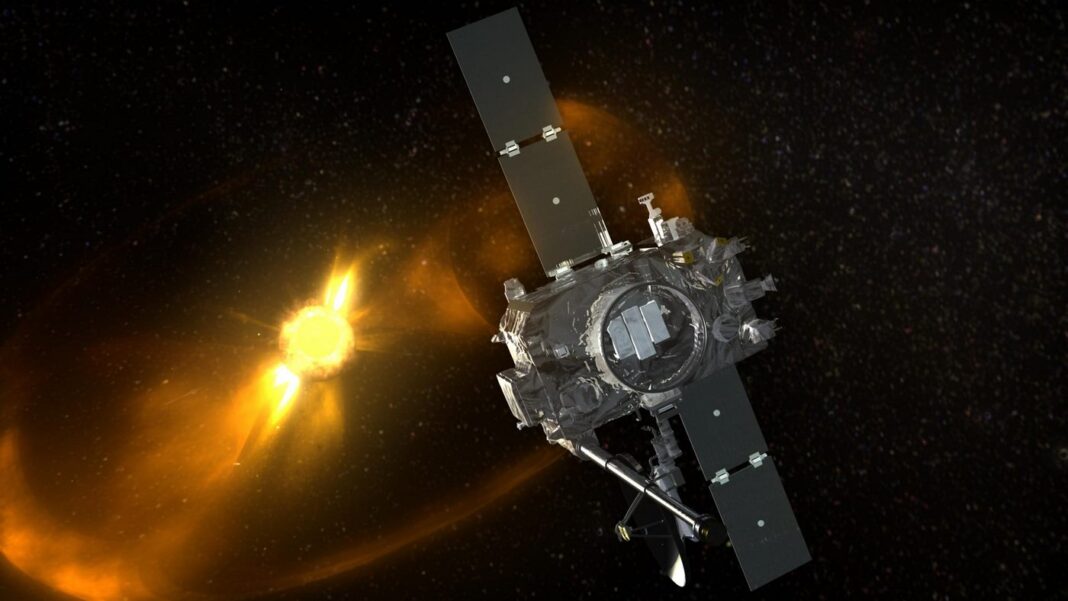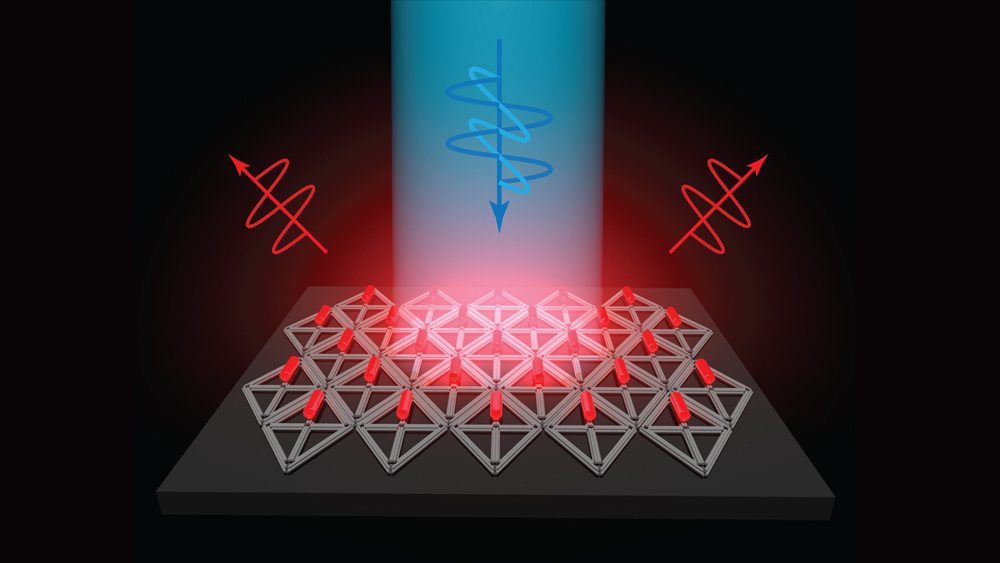A remarkable event is on the horizon as NASA’s STEREO-A spacecraft prepares to make its first homecoming visit since its launch 17 years ago. This historic spacecraft, which provided humanity with its initial multi-perspective view of the Sun, is poised to fly by Earth once again on Saturday, August 12th, marking a pivotal moment in space exploration.
The STEREO-A (Solar TErrestrial RElations Observatory) spacecraft, a twin companion to STEREO-B, was launched from Florida’s Cape Canaveral Air Force Station on October 25th, 2006. Before this mission, our insights into the Sun were restricted to observing one side at a time. However, the deployment of these two spacecraft revolutionized our understanding by enabling a stereoscopic, three-dimensional perspective.
STEREO-A, referred to as “Ahead,” maintained its lead over Earth’s orbit while STEREO-B, or “Behind,” trailed behind, both tracing Earth-like paths around the Sun. The mission’s primary goal was achieved in its initial years: it presented humanity with the very first stereoscopic view of our Sun, offering multiple perspectives that enriched our understanding of this celestial body.
An incredible milestone was reached on February 6, 2011, when STEREO-A and -B achieved a 180-degree separation in their orbits. This breakthrough granted humanity a complete spherical view of the Sun, liberating us from our prior tethered viewpoint along the Sun-Earth line. Lika Guhathakurta, the STEREO program scientist at NASA, explained that this achievement shattered previous limitations and bestowed upon us a genuine three-dimensional comprehension of the Sun.
As STEREO-A approaches its Earth flyby, it will complete one full revolution, effectively lapping Earth within our solar orbit. The upcoming weeks, both before and after this flyby, present an invaluable opportunity for scientists to pose questions that typically lay beyond the mission’s scope.
Coronal mass ejections (CMEs), plumes of solar material, can exert varying impacts on Earth, ranging from satellite disruptions and radio signal interference to potential power grid surges. These effects hinge on the magnetic field enclosed within the CME, a field that undergoes significant transformations across the vast 93 million miles separating the Sun and Earth.
During the period surrounding STEREO-A’s Earth flyby, any CMEs directed toward Earth will traverse the path of STEREO-A and other nearby spacecraft. This alignment allows scientists to collect vital multipoint measurements from within a CME. NASA elucidates that these observations aid in the development of computer models simulating the behavior of these solar eruptions, with each new spacecraft observation refining the accuracy of these models.
Toni Galvin, a University of New Hampshire professor and principal investigator for one of STEREO-A’s instruments, likens our current understanding of CMEs to the tale of blind men and an elephant. She underscores the need for more comprehensive data, comparing it to the various perspectives of the blind men touching different parts of the elephant. This analogy reflects the limitation of having only a few spacecraft in close proximity to each other for CME measurements.
The timing of this flyby coincides with heightened solar activity as we approach the predicted solar maximum in 2025. During this phase of the solar cycle, STEREO-A’s journey past the Sun takes place within a fundamentally altered solar environment, promising an abundance of new insights waiting to be gleaned.
NASA’s STEREO-A spacecraft’s imminent Earth flyby marks a significant homecoming after 17 years of pioneering space exploration. Its groundbreaking achievements in delivering a multi-perspective view of the Sun have paved the way for deeper insights into solar phenomena, with the upcoming flyby offering a golden opportunity to uncover even more about our closest star.
What is the purpose of the STEREO-A spacecraft? The purpose of the STEREO-A (Solar TErrestrial RElations Observatory) spacecraft is to provide a multi-perspective view of the Sun, enabling scientists to study solar phenomena and better understand solar eruptions, coronal mass ejections (CMEs), and their potential impact on Earth’s space environment.
When was STEREO-A launched and from where? STEREO-A was launched on October 25th, 2006, from the Cape Canaveral Air Force Station in Florida.
How did STEREO-A and STEREO-B contribute to our understanding of the Sun? STEREO-A and STEREO-B provided a groundbreaking stereoscopic, three-dimensional view of the Sun. This dual-spacecraft mission allowed scientists to observe the Sun from two different vantage points, leading to a comprehensive understanding of solar phenomena and aiding in the prediction of space weather events.
What milestone did STEREO-A and -B achieve on February 6, 2011? On February 6, 2011, STEREO-A and STEREO-B achieved a significant milestone by reaching a 180-degree separation in their orbits. This event allowed humanity to see the Sun as a complete sphere for the first time, breaking the previous constraint of observing only one side of the Sun at a time.
How do coronal mass ejections (CMEs) affect Earth? Coronal mass ejections, or CMEs, are bursts of solar material and magnetic fields ejected from the Sun’s corona. When these CMEs interact with Earth’s magnetosphere, they can lead to disruptions in satellite communication, radio signals, and power grids. They may cause geomagnetic storms and, depending on the CME’s magnetic field orientation, affect various technological systems.
Why is the magnetic field within a CME crucial for its effects on Earth? The magnetic field within a CME determines its potential impact on Earth. If the CME’s magnetic field aligns favorably with Earth’s magnetic field, it can trigger geomagnetic storms and disruptions in technology. Understanding the magnetic properties of CMEs is essential for predicting their effects and mitigating potential risks.
How does STEREO-A’s upcoming Earth flyby provide unique scientific opportunities? STEREO-A’s Earth flyby allows scientists to gather multipoint measurements from within a CME’s path. This provides a rare chance to study the evolution of a CME’s magnetic field as it travels from the Sun to Earth. These measurements contribute to improved computer models for predicting space weather and its potential impact on our planet.
Who is Toni Galvin, and how does she relate CME data collection to the parable of blind men and an elephant? Toni Galvin is a professor at the University of New Hampshire and a principal investigator for one of STEREO-A’s instruments. She compares the collection of data on CMEs to the parable of blind men and an elephant. Just as the blind men touch different parts of the elephant and form partial perceptions, scientists typically had limited data from a few spacecraft for understanding CMEs. STEREO-A’s flyby now offers a more complete perspective.
What is the significance of STEREO-A’s flyby occurring during a period of heightened solar activity? STEREO-A’s flyby during a period of heightened solar activity, leading up to the predicted solar maximum in 2025, provides an exceptional opportunity to observe the Sun in a dynamic state. This phase allows researchers to study solar phenomena and eruptions at their peak, potentially revealing new insights into the behavior of our closest star and enhancing our understanding of space weather forecasting.











